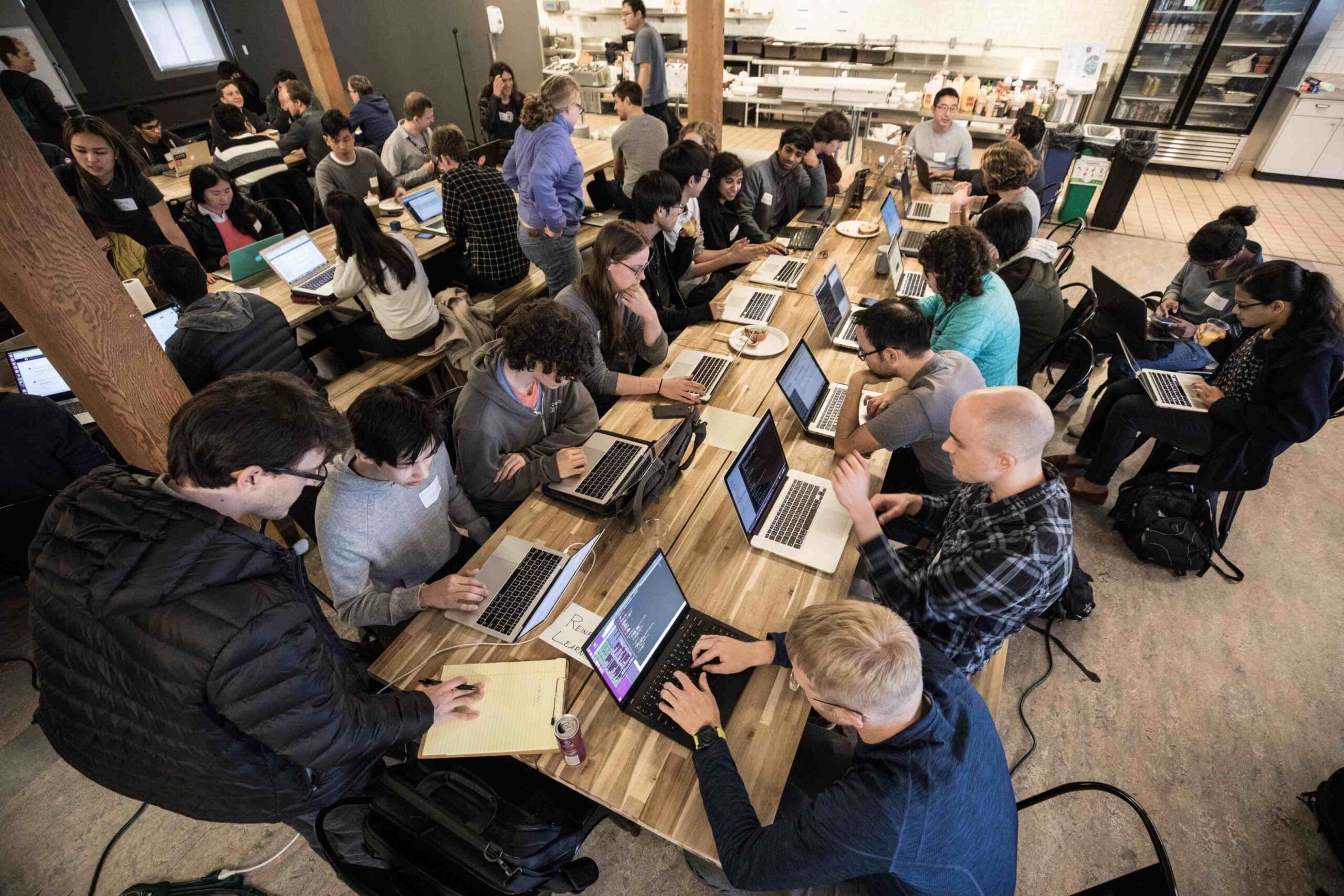OpenAI was born in 2015 as a non-profit organization whose goal was to “advance digital intelligence in the way that can most benefit humanity as a whole”. That structure also had the clear objective of not limiting its work to the need to generate financial returns. But this changed in 2019 when OpenAI Global LLC, a for-profit subsidiary with limited profits, was announced to raise capital. They needed money, and total donations were far from the initially expected.
At that time, OpenAI promised that the non-profit organization would remain intact and that its board would continue to be the governing body of all its activities. Sources consulted by Reuters suggest that this scenario could change, once again, due to the need for more money. As we know, the firm is seeking new investors to fulfill its mission, and currently, having a deeply rooted structure would be making some capital-rich players lose interest. The solution? A much needed change in the structure.
OpenAI and the control of its non-profit organization
The news agency mentioned that OpenAI’s commercial arm is working on a very important restructuring. According to their explanation, it consists of getting rid of the control of the initial non-profit organization. The board of directors of the latter, let’s remember, was behind Altman’s dismissal last November. After the entrepreneur’s return, the board chairs were renewed, but they are still there, directly validating each important decision of the company, at least for now.
Current structure of OpenAI
The plan to carry out this move is not yet concluded. The sources indicate that it is being evaluated by lawyers and shareholders. Although there are not too many details, an OpenAI spokesperson provided some clues. “We remain focused on creating AI that benefits everyone, and we’re working with our board of directors to make sure we’re better positioned to succeed in our mission. The non-profit organization is fundamental to our mission and will continue to exist,” he told Reuters.
The sources point out that the non-profit organization will have a minority stake in the for-profit company. If materialized, this move could be very effective in attracting a greater number of investors, although it would be accompanied by concerns from some industry members. The centralization of power within a leading artificial intelligence company could translate into security risks, especially when it has lost its original alignment team.
The maker of ChatGPT, OpenAI, is working on a plan to restructure its core business into a for-profit charitable corporation that will no longer be controlled by its non-profit board, according to people familiar with the matter, a move that will make the company more attractive to investors.
The details of the proposed corporate structure, first reported by Reuters, highlight the significant governance changes happening behind the scenes and also about the possibility of the CEO, Sam Altman, receiving equity. The plan is still being negotiated with lawyers and shareholders, and the timeline to complete the restructuring remains uncertain, the sources said.
The restructuring also comes amid a series of leadership changes at the startup. Mira Murati, OpenAI’s long-time chief technology officer, abruptly announced her departure from the company on Wednesday. Greg Brockman, OpenAI’s chairman, has also been on sabbatical.
Founded in 2015 as a non-profit AI research organization, OpenAI added the for-profit entity OpenAI LP as a subsidiary of its non-profit organization in 2019, securing capital from Microsoft to fund its research.
The company grabbed global attention with the launch of ChatGPT in late 2022, a generative AI application that spits out human-like responses to text queries, which has become one of the fastest-growing applications in history with over 200 million weekly active users, sparking a global race to invest in AI.
Alongside ChatGPT’s success, OpenAI’s valuation has soared from $14 billion in 2021 to $150 billion in the new convertible debt round under discussion, attracting investors such as Thrive Capital and Apple.
AI SAFETY
The company’s unusual structure, which gives full control of the for-profit subsidiary to the non-profit OpenAI organization, was originally set up to ensure the mission of creating a “safe AGI that is broadly beneficial,” referring to artificial general intelligence that reaches or exceeds human intelligence.
The structure came to light last November during one of Silicon Valley’s biggest boardroom dramas, in which members of the non-profit organization’s board ousted Altman for a breakdown in communication and loss of trust. He was reinstated within five days with overwhelming support from employees and investors.
Since then, OpenAI’s non-profit board has been refreshed with more tech executives, chaired by Bret Taylor, the former co-CEO of Salesforce who now runs his own AI startup. Any corporate change would require approval from its non-profit board, comprising nine people.
Removing the non-profit control could make OpenAI operate more like a typical startup, a move generally welcomed by its investors who have poured billions into the company.
Similar posts
However, it could also raise concerns from the AI safety community about whether the lab still has sufficient governance to be accountable in its pursuit of AGI, as it has dissolved the alignment team that focuses on the long-term risks of AI earlier this year.
It’s unclear how much equity Altman will receive. Altman, who is already a multi-billionaire thanks to his multiple startup investments, has previously stated that he decided not to take equity in the company because the board needed a majority of disinterested directors without stakes in the company. He has also said he has enough money and does it because he loves the work.
OpenAI’s new structure would resemble that of its major rival Anthropic and Elon Musk’s xAI, which are registered as public benefit corporations, a form of for-profit organizations that aim to promote social responsibility and sustainability in addition to profits.
Mira Murati, Chief Technology Officer of OpenAI, has announced her departure from the company after six and a half years of work. The talented engineer, whose work was key to the development of ChatGPT, is completely leaving the artificial intelligence (AI) company led by Sam Altman.
“My six and a half years with the OpenAI team have been an extraordinary privilege,” she said in a message on X. In the post, she thanked the team and added that she has made this decision because she believes it is time to focus on her own projects. Murati wrote that she is leaving because she wants to “create the time and space” to do her own exploration.
Mira Murati joined OpenAI in 2018 after working at the virtual reality company Leap Motion and at Tesla. At that time, it was a very different company than the one we know now. It was barely three years old and GPT-2 had not yet seen the light of day. Before joining OpenAI, she worked on the Model X at Tesla and was Vice President of Product and Engineering at Leap Motion, which was working on an augmented reality system to replace keyboards and mice with hand gestures.
In 2019, the OpenAI name began to gain prominence when GPT-2 demonstrated the ability to generate text similar to what we humans produce. That same year, the firm moved completely away from its “non-profit” essence and began operating a for-profit subsidiary.
During her tenure, Murati played a key role in positioning OpenAI as a reference company, diagramming the company’s supercomputing strategy and managing research teams that developed ChatGPT, DALL·E, and Codex. Under her leadership, OpenAI has not only created smarter models but has changed the way these systems reason and learn, addressing complex problems with innovative solutions.
In November of last year, the OpenAI board of directors appointed Mira Murati as interim CEO after the dismissal of Sam Altman. After several chaotic days, Altman returned to his original position, and the same happened with Murati, who returned to being CTO.
At the time of publishing this article, we do not have details on Murati’s future plans. OpenAI has also not announced the name of the person who will assume the CTO role. Reuters points out that organizational changes are on the horizon for the company.
Murati’s departure is part of a series of recent changes in OpenAI’s top management. In recent months, several senior executives have left the company. Greg Brockman, who served as chairman of the board of directors, announced last August that he would be taking a “sabbatical” for a year. John Schulman, one of the 11 co-founders and responsible for the “alignment” of AI models, also left the company to join rival Anthropic. Peter Deng, from the product team, also recently left the company. OpenAI co-founder Ilya Sutskever left the company earlier this year after a boardroom battle in which Altman was temporarily ousted from the company.
This wave of departures has raised questions about the stability and future of the company, which has consolidated itself as a leader in the artificial intelligence sector. Altman has responded with warm words to Murati: “Mira, thank you for everything. It is difficult to overstate how much Mira has meant to OpenAI, our mission, and to all of us personally.”
In recent developments, OpenAI launched a new series of AI models earlier this month designed to spend more time thinking, with the hope that the generative AI chatbots will provide more accurate and beneficial responses. The new model, nicknamed Strawberry, is designed to tackle complex tasks and solve more complex problems in science, coding, and mathematics, something previous models have been criticized for not providing consistently.
Unlike their predecessors, these models have been trained to refine their thought processes, try different methods, and recognize errors before deploying a final response. OpenAI’s push to improve “thinking” in its model is a response to the persistent problem of “hallucinations” in AI chatbots. This refers to their tendency to generate persuasive but incorrect content, which has somewhat cooled enthusiasm for ChatGPT-style AI features among business customers.
The new launch comes as OpenAI is reportedly raising funds that could value it at around $150 billion, making it one of the most valuable private companies in the world, according to US media.






